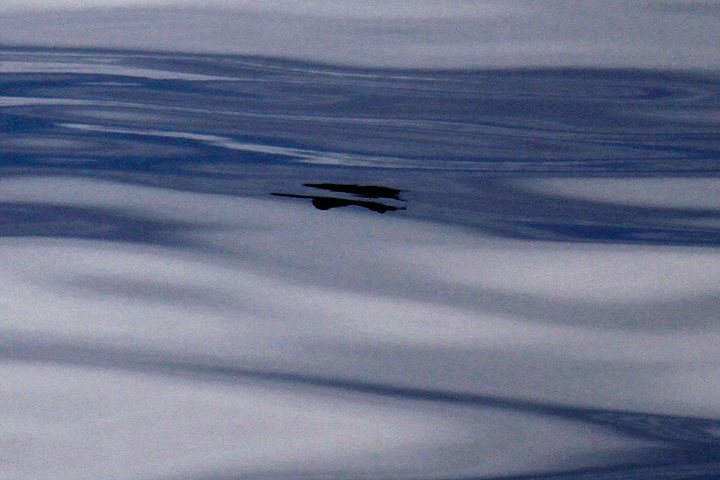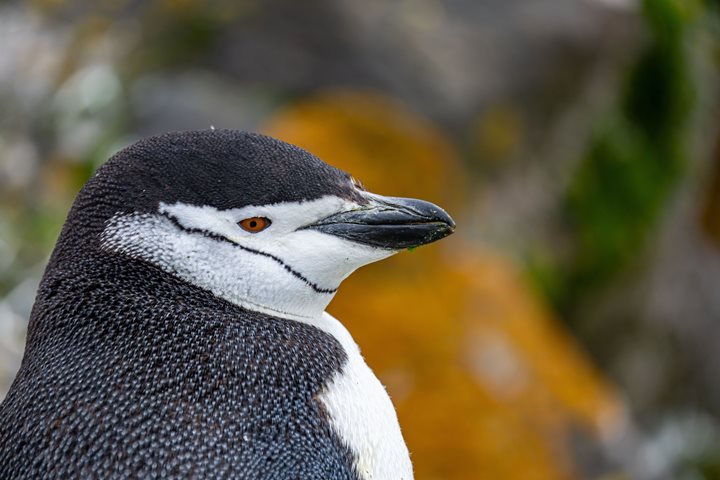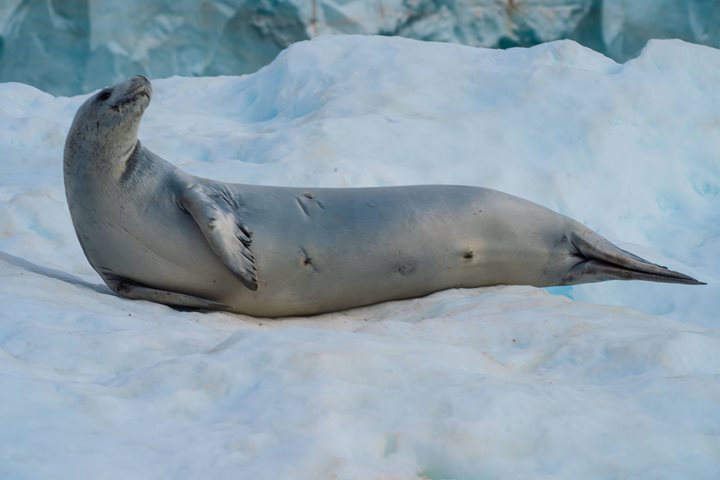The wind is blowing a steady 35 knots as National Geographic Resolution arrives off the east side of Vega Island. Vega is one of the many volcanic islands in the James Ross Basin. Separated from James Ross Island by Herbert Sound, the island was named by Otto Nordenskjold, leader of the Swedish Antarctic Expedition in 1901-04.
The region is extremely rich in terrestrial and marine fossils. The fossils found on Vega Island are of particular importance to understanding the climate and location of Antarctica a million years ago. Dinosaur fossils found on Vega Island indicate the dinosaurs living here ate plants, which means Antarctica had to be warmer and further north, and moved farther south over millions of years.
After breakfast, guests and field staff came on deck to take in the breathtaking view of the unique geological structures of the region. Much less snow is on the sides of the mountains and mesas. Several large tide water glaciers are dumping ice into the small bay where National Geographic Resolution is on standby for our morning expedition. By mid-morning the wind has dropped to a manageable velocity. Soon the small boats are over the side and headed to shore. Our guests enjoyed a splendid hike getting a bit of exercise and learning about the geology of the island from our naturalists. Mainly volcanic ash and pyroclastic materials make up the landscape. The area feels very primordial, like a Jurassic Park.
By noon all guests are back aboard, and the hotel staff have arranged a tasty BBQ on deck 8 for all aboard to enjoy under sunny skies and incredible views. For our afternoon expedition location, the ship does not have to go far. We make a short steam to the north end of Vega Island where there is a small bay. In this bay is Devil Island. This narrow, rocky island has a low valley in the middle, with two peaks at either end making up the “devil’s horns.”
An Adelie penguin colony is on the island, and we even saw a few Antarctic fur seals lounging on the ice flows grounded offshore. The landing is often difficult, but today we had excellent conditions. From the beach guests could look out to Cape Well-met on Vega Island. This is where two stranded groups of the Nordenskjold party finally met up in late 1903.
We arrived at low tide and many exquisite bergy bits were stranded on the beach, providing a sun-drenched maze of nature’s pure ice sculptors to stroll along. With approximately 8,000 pairs of penguins, this moderately sized colony is busy as chicks fledge and everybody starts to head to sea for winter. Many of the fledging Adelie chicks chase after their parent begging for food, making for some fun chase scenes as the parents run down the beach and the frustrated chicks squaw in protest, making a traveler laugh at the sight.
We have enjoyed splendid weather the past days and back aboard the ship for recaps and dinner, all are eager to see what tomorrow will bring on this Antarctic expedition.









